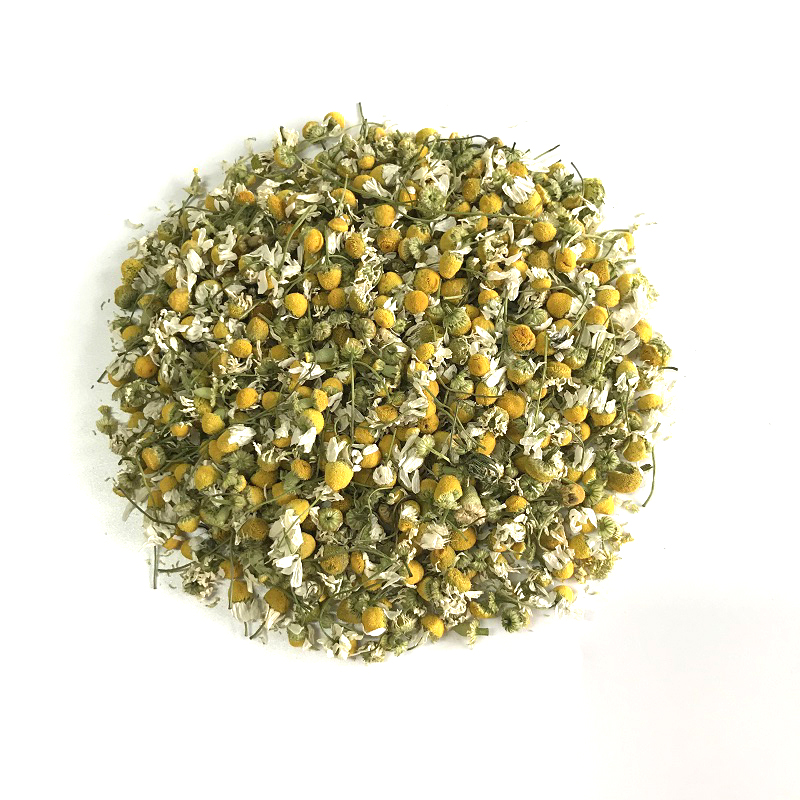
Chamomile, scientifically known as Chamomilla recutita or Matricaria chamomilla, is a daisy-like plant that originates from Western Asia, Northern Europe, and North Africa, although it is now widely distributed throughout the world. Chamomile is best known for its small daisy-like flowers with a conspicuous yellow disk in the center and numerous white petals. It is a beloved herb in many traditional medicine systems, especially in herbal teas and therapeutic preparations due to its various health benefits.
Characteristics of Chamomile:
Appearance: Chamomile plants grow low to the ground, reaching up to about 60 centimeters in height. The leaves are feathery and deeply divided, similar to a fern. The flowers have a distinctive disc of numerous small yellow central florets surrounded by white rays.
Fragrance: Chamomile has a gentle, apple-like aroma, which becomes more pronounced when the flowers are dried.
Flowering Season: Chamomile typically blooms in spring and early summer, although with succession planting, it's possible to enjoy its blooms and benefits over an extended period.
Cultivation: It thrives in well-drained soils and requires full sun to partial shade. Chamomile is relatively low maintenance, making it suitable for beginners and experienced gardeners alike.
Uses and Benefits of Chamomile:
Tea and Drinks: Chamomile is most commonly used to make a soothing tea, which is thought to aid digestion, reduce stress, and promote relaxation. The tea is made by infusing dried chamomile flowers in hot water.
Skin Care: Due to its anti-inflammatory properties, chamomile is often used in cosmetics and skin care products to help calm the skin, reduce redness, and treat mild irritations and burns.
Medicinal Purposes: In traditional medicine, chamomile is used for a variety of conditions including insomnia, menstrual cramps, and as a natural remedy for relieving symptoms of allergies and asthma.
Relieving Cold Symptoms: Chamomile tea is also consumed during cold seasons to alleviate symptoms like sore throat and congestion.
Oral Health: Some studies suggest that chamomile mouthwashes may help reduce inflammation in the gums and improve oral health.
Emotional Well-being: The aromatherapy benefits of chamomile are believed to help reduce anxiety and improve mood.
Antispasmodic Properties: Chamomile contains certain compounds that may help relax muscles, potentially offering relief from spasms and muscle twitches.
Sleep Aid: Chamomile tea is widely used as a natural sleep aid due to its calming effects on the nervous system.
Antibacterial and Antifungal: Chamomile possesses antimicrobial properties, which can be useful in treating bacterial and fungal infections when used topically.
It's important to note that while chamomile is largely safe and beneficial for most people, it can cause allergic reactions in some individuals, especially those who are sensitive to plants in the Asteraceae family. Pregnant women should consult their healthcare provider before consuming chamomile in medicinal amounts due to potential interactions with hormones. As always, it's advisable to talk with a healthcare professional before using chamomile or any herbal remedy,






